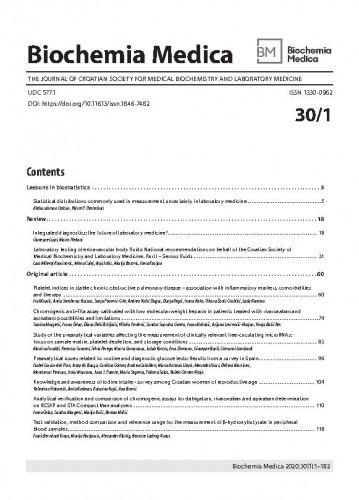The Six Sigma methodology has been widely implemented in industry, healthcare, and laboratory medicine since the mid-1980s. The performanceof a process is evaluated by the sigma metric (SM), and 6 sigma represents world class performance, which implies that only 3.4 or less defects (orerrors) per million opportunities (DPMO) are expected to occur. However, statistically, 6 sigma corresponds to 0.002 DPMO rather than 3.4 DPMO.The reason for this difference is the introduction of a 1.5 standard deviation (SD) shift to account for the random variation of the process around itstarget. In contrast, a 1.5 SD shift should be taken into account for normally distributed data, such as the analytical phase of the total testing process;in practice, this shift has been included in all type of calculations related to SM including non-normally distributed data. This causes great deviationof the SM from the actual level. To ensure that the SM value accurately reflects process performance, we concluded that a 1.5 SD shift should be usedwhere it is necessary and formally appropriate. Additionally, 1.5 SD shift should not be considered as a constant parameter automatically included inall calculations related to SM.
Sažetak

 Biochemia medica : the journal of Croatian Society for Medical Biochemistry and Laboratory Medicine : 30,1(2020) / glavna i odgovorna urednica Daria Pašalić.
Biochemia medica : the journal of Croatian Society for Medical Biochemistry and Laboratory Medicine : 30,1(2020) / glavna i odgovorna urednica Daria Pašalić.